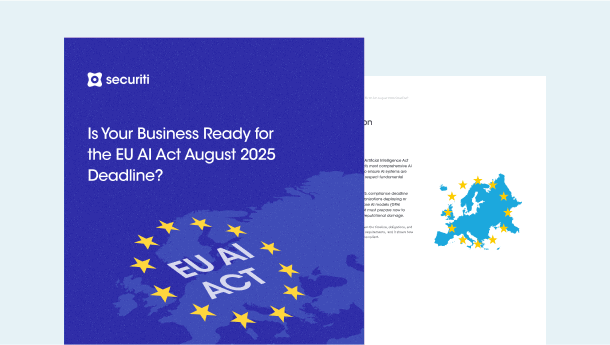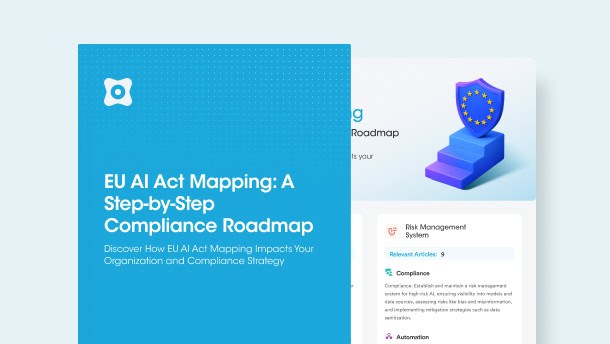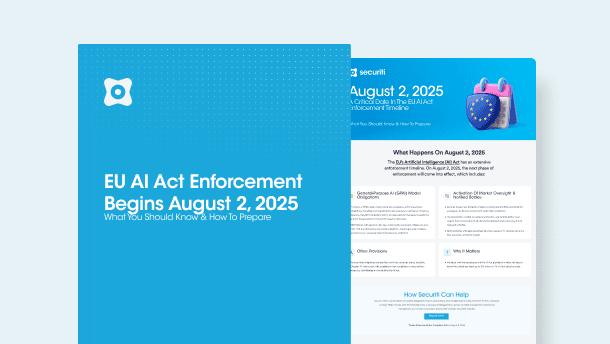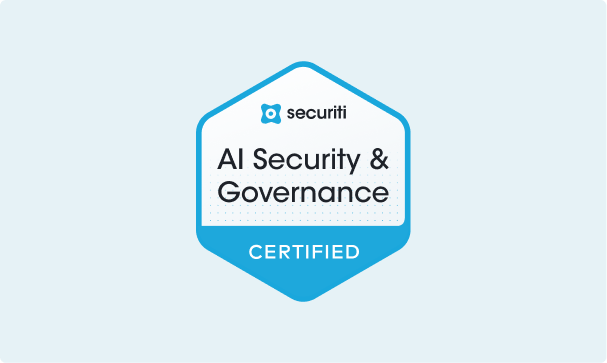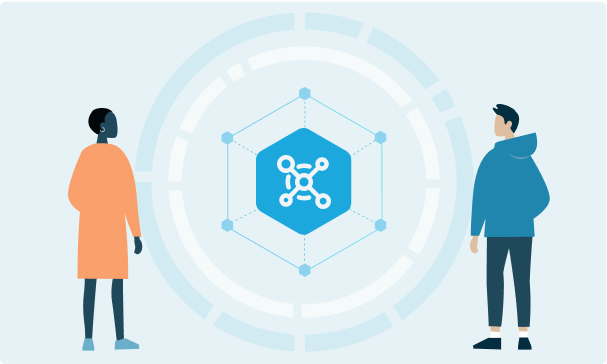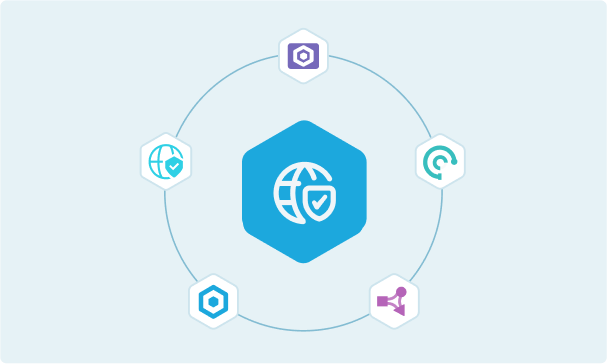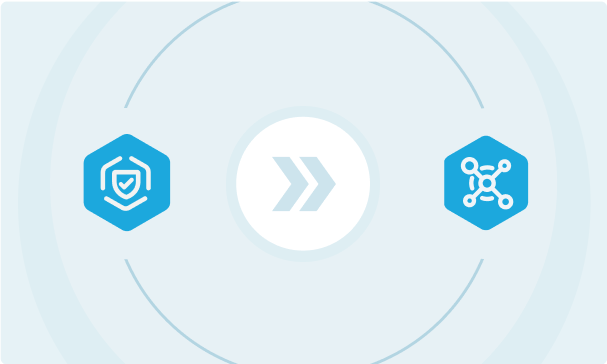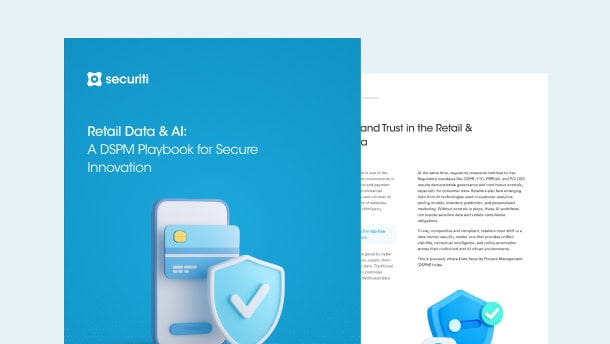Objectives of the EU AI Act
The key objectives of the AI Act include:
1. Protection of Fundamental Rights and Users' Safety
One of the primary reasons for the AI Act to exist is to protect the fundamental rights and ensure user safety. AI tools have grown in their capabilities over the past few years, often operating in a fairly unregulated manner. Poorly governed AI systems can infringe on privacy, enable discrimination, and endanger the physical safety of people in critical instances such as healthcare, transportation, and law enforcement. The AI Act sets clear boundaries, such as banning certain unacceptable risks outright, restricting others, and legitimizing those that are safe, ensuring individuals' rights remain protected without hindering responsible innovation. For organizations themselves, this means a greater degree of responsibility when it comes to designing AI systems, keeping in mind human rights, as well as other safety considerations, right from the start.
2. Establishing Trust in AI Systems
As a Nature article revealed, trust is often cited as a major reason why some users are skeptical of using AI tools to begin with. The AI Act addresses this issue directly, via its mandatory transparency, accountability, and oversight requirements for high-risk AI systems. Through these requirements, organizations are expected to ensure their AI systems’ decisions are explainable, with documentation of training data and methodologies to corroborate them. For organizations, emphasis on trust can be a significant competitive advantage as it helps them demonstrate their AI systems are reliable, fair, and compliant. Moreover, this will make it easier to secure customer loyalty, win partnerships, and expand into regulated markets.
3. Fostering Innovation with Clear Guidelines
In contrast to fears that regulations stifle innovation, the AI Act is meant to encourage responsible innovation by providing developers and deployers with clear and understandable guidelines. Through its risk categorization and compliance obligations, the AI Act reduces the overall legal uncertainty for organizations operating AI capabilities within the EU. Moreover, instead of having to navigate a patchwork of regional and national regulations, organizations can focus their compliance efforts towards a harmonized set of requirements in the EU. Such clarity means organizations can invest in AI with greater confidence. This will be particularly helpful for startups and SMEs, ensuring they are not overburdened with regulatory red tape.
Key Provisions of the EU AI Act
The key provisions of the AI Act include:
1. A Risk-Based Approach to AI Systems
Much has been written and speculated about the AI Act’s tiered risk-based framework that regulates AI based on its potential impact on individuals and society. The high-risk AI systems will likely present the greatest challenge for organizations, both in understanding their scope of application and the obligations for organizations developing or deploying such systems.
I. High-Risk Systems Definition
High-risk AI systems include all AI applications related to critical infrastructure, healthcare, education, law enforcement, recruitment, financial services, and immigration. In other words, any AI systems with the potential to affect users’ fundamental rights, access to essential services, and personal safety fall into this category.
II. Obligations for High-Risk AI
Both the providers and deployers of high-risk AI systems are subject to significant compliance obligations. Some of these obligations include implementing robust risk management processes, ensuring the quality and representativeness of training data, maintaining detailed technical documentation, embedding human oversight mechanisms, regular testing, monitoring, and post-market surveillance mechanisms. Organizations that fall into this category must ensure they have these considerations built directly into their AI lifecycle and maintain evidence of their compliance with regulatory standards.
III. Prohibited AI Practices
As explained earlier, some AI use cases and applications are deemed to be unacceptable. Consequently, they are banned outright. These include systems that manipulate human behavior in harmful ways, exploit vulnerable groups, use real-time biometric identification in public spaces (with narrow exceptions), and deploy social scoring by government agencies. Their ban is a result of their incompatibility with European values, as well as being in breach of users' fundamental rights. For organizations, this means the establishment of clear red lines on what practices they must strictly refrain from. Regardless of their innovation potential or tamer application possibilities, any AI application falling in this category must not be placed on the EU market in any shape or form.
2. Transparency Requirements
Transparency obligations are given an elevated degree of importance in the AI Act, especially for AI systems that interact directly with humans or generate synthetic content. Chatbots are expected to disclose to users that they’re communicating with AI, deepfakes, and other synthetic content must be labelled as such, and emotional recognition systems are required to inform users that they are being analyzed. The purpose of such requirements is to prevent any deception, allowing users to be informed of their interaction with such AI systems, and ensuring they can make informed decisions related to the use of these systems. For organizations, this means the implementation of clear disclosure mechanisms that are easily explainable to users. If done properly, this should foster trust and accountability within the organization’s operational workflows related to AI usage.
3. Regulatory Oversight & Enforcement
The AI Act has a similarly multilayered enforcement system, led by the European AI Office. This office will be supported by the national supervisory authorities in each member state of the EU. Together, they will be responsible for monitoring compliance, conducting inspections, and handling complaints. Mirroring the GDPR’s enforcement structure, this will ensure consistency in its application across the EU while giving the local authorities enough leverage to address issues based on their national contexts. For organizations, this means regulatory scrutiny at multiple levels. Compliance includes not only operational reforms but also documentation of all such measures along with audit trails that verify compliance over an extended period and can be used for future regulatory reviews.
Steps for Compliance with the EU AI Act
Organizations aiming for AI Act compliance can begin this process with the following steps.
1. Understand AI Risk Categories
One of the standout aspects of the AI Act is its categorization of risks. Therefore, compliance with the Act relies on an acute and comprehensive understanding of how it classifies AI systems based on their risk. All AI systems are divided into four distinct categories: unacceptable, high-risk, limited risk, and minimal risk. Organizations must assess their AI systems and determine which category they fall into, as their obligations and responsibilities will depend on this categorization. Such an assessment requires a comprehensive audit of their entire AI use case inventory, from customer-facing automated chatbots to backend engineering autonomous workflows. Done properly, this not only clarifies the exact compliance obligations for an organization but also helps in the prioritization of resources, ensuring that high-risk systems receive immediate attention while the lower-risk applications are managed accordingly.
A continuation of the aforementioned exercise, as AI Act compliance is not a one-time, static activity, organizations are required to commit to continuous oversight and auditing to ensure their AI models are compliant, and more importantly, stay compliant in terms of data quality, accuracy, bias detection, and human oversight mechanisms. Each of these aspects is consistently evolving as the organization’s AI usage evolves, thereby necessitating equally consistent audits. This can be best done via a structured audit framework that integrates both the technical assessments and organizational standards. This means monitoring datasets for bias, reviewing algorithmic performance, and ensuring that human operators remain effectively involved in overseeing and validating decision-making instances. Moreover, documentation of these audits is equally important to adhere to evidence requests from regulators.
3. Ensure Transparency & Documentation
Through documentation, organizations can ensure their compliance with a core AI Act requirement, i.e., transparency. This is particularly important for high-risk AI systems as organizations are expected to be able to explain how their AI systems function, what data they use, and how they make decisions. Not only is it a regulatory obligation, but it is also a potent trust-building measure for customers, partners, and regulators. Organizations that maintain detailed, timely, and easy-to-understand records of their training datasets, model design choices, validation results, risk assessments, and mitigation measures can create a “compliance shield” that acts as a vital foundation for accountability and continuous improvement going forward.
4. Implement Effective Governance Frameworks
Technical measures are not enough to achieve AI Act compliance, or more accurately, not enough on their own. They must be bundled together with a strong governance framework that defines roles, responsibilities, and oversight mechanisms across the organization. Through this framework, an organization can ensure all its AI-related risks are monitored at both the operational and strategic levels, while also establishing a chain of accountability that extends from the development teams to the executive leadership. Key elements of such a framework involve creating clear policies for AI use, establishing cross-functional governance committees, and embedding compliance into procurement and vendor management processes.
5. Training & Education for Teams
At its core, AI Act compliance, like compliance with any other regulation, is a people-driven process as much as it is a technically-driven one. Teams across the organization must wholly understand their exact role in helping the organization meet its AI Act obligations. In the absence of an adequate training program that is customized to each individual team’s needs, even the most comprehensive and well-designed compliance framework would not yield the required results. The education and awareness programs must cover topics such as AI risk categories, documentation standards, ethical AI principles, and regulatory updates, with specialized training on audit procedures, human oversight, and data governance when involving high-risk AI systems.
How Securiti Can Help
As stated multiple times earlier, AI Act compliance will be a formidable challenge for most organizations, for a number of reasons. Firstly, unlike most regulations, the AI Act’s various obligations will come into effect in phases. While this gives organizations more time to comply, it also requires extensive changes to how they operate in terms of their AI usage. Doing so without negatively impacting their productivity or operational workflows is easier said than done. And then there’s the question of undertaking compliance measures themselves. Depending on exactly what obligations an organization finds itself subject to, it may require an extensive overhaul of its data processing and AI usage operations. Moreover, they would require a comprehensive overview of all their compliance processes to ensure they remain on top of their obligations and do not commit violations either knowingly or unknowingly. Securiti can help with all that. Securiti’s Data Command Center and AI.
Governance is a holistic solution for building safe, enterprise-grade generative AI systems. This enterprise solution comprises several components that can be used collectively to build end-to-end secure enterprise AI systems or in various other contexts to address diverse AI use cases. With the AI Governance solution, organizations can conduct comprehensive processes involving all AI components and functionalities used within their workflows, including model risk identification, analysis, controls, monitoring, documentation, categorization assessment, fundamental rights impact assessment, and conformity assessment. Leveraged properly, these solutions ensure all critical obligations are met in an effective and timely manner without compromising an organization’s other operations. Request a demo today and learn more about how Securiti can help you select and deploy the most appropriate modules and solutions to comply with the regulatory requirements of the EU’s AI Act.
Frequently Asked Questions (FAQs) about the EU AI Act
Some of the most commonly asked questions related to the AI Act are as follows:


